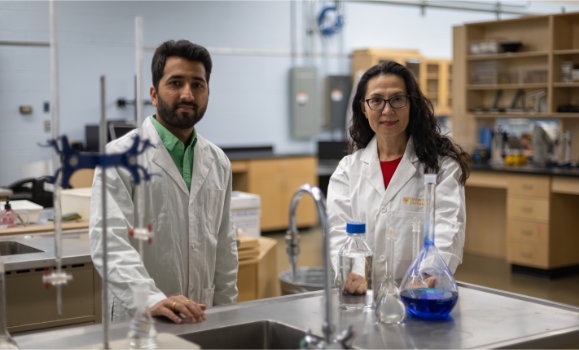News
» Go to news mainFrom Trash‑to‑Treasure


As the world population continues to grow, increasing emphasis is placed on green technologies, including zero or less waste production, diminishing greenhouse gas emissions, recycling resources, and environmental remediation.
Additionally, human activities have increased waste generation and water scarcity and as a result, there is a severe water pollution crisis. If water resources continue to be polluted at the current rate, there will be a freshwater shortage in the next 30 years.
Several factors have contributed to this situation, particularly the staggering quantities of untreated wastewater and effluents from water-intensive industries. Wastewater is generally contaminated with phenols, pharmaceuticals, and dyes which are of major concern. Many of these contaminants have characteristics of mutagenic, carcinogenic, or pose high acute toxicity to humans and animals.
According to the UN's Sustainable Development Goals, science research focusing on recovery techniques and proper waste control is essential to address the worldwide biomass waste catastrophe.
The Bioenergy and Bioproducts Research Lab on the Agricultural Campus focuses on converting abundantly available and low-valued biomass waste into high-value materials for environmental remediation applications, primarily on wastewater treatment.
“We are working with organic waste and turning it into something useful,” explained Dr. Sophie He, Department of Engineering.
For example, Dr. He and her team are converting spent coffee grounds, flax shives, barley straw and sawdust to biofuels or biocarbon materials.
“If this organic waste is not handled properly and sent to landfills, it will release greenhouse gases like methane which is extremely harmful to our environment,” she added. “Therefore, the benefits of the research are two-fold.”
The converted waste can be used to adsorb pollutants and contaminants from wastewater or can be used as photocatalysts to degrade pollutants in water.
Dr. He has led 25 projects at international, national, provincial, and university levels related to the development of biofuels, biochemicals and biomaterials from renewable resources and biomass waste, most recently involving researchers from the Queensland University of Technology, Australia and Sao Paulo State University, Brazil on engineered biochar/hydrocar and on their agricultural and environmental applications.
“We are decomposing biomass waste to generate energy-dense products such as biofuels and solid char or charcoal via an economical and eco-friendly route known as hydrothermal liquefaction and carbonization processes,” explained Izaak Walton Killam Postdoctoral Fellow Dr. Rahil Changotra. “The synthesis of highly rich carbonaceous materials from various biomass waste has emerged as an interesting strategy to deal with the management of carbon residues.”
The annual accumulation of biomass waste equals about four to five times the world's primary energy demand. Biomass use is considered carbon neutral and is the second largest renewable energy source in Canada comprising only four per cent of Canada's total energy supply, following hydroelectricity.
The Bioenergy and Bioproducts Research Lab continues to examine methods for achieving an efficient wastewater treatment using a biomass-derived material, which is innovative and significant for the sustainable development of the waste-to-wastewater platform.
Next steps include testing additional types of biomass waste and to optimize processing parameters to decrease production costs.
#WorldWaterDay #NEM2023
Recent News
- Agriculture students turn wool into warmth
- Connection, Passion and Purpose
- Tractor Safety Course instructor
- Always more than one path
- MacRae Library Summer Hours
- Faculty of Agriculture students win the top awards at the Science Atlantic conference
- Annual Sustainability and Transportation Survey
- Engineering banquet brings students, faculty together in celebration of community
